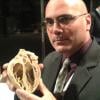The 2016 Nobel Prize in chemistry was recently awarded to three scientists who developed miniaturized machines that are smaller than the width of a human hair. This science and engineering feat was recognized because it may help take chemistry and engineering into a new dimension in the coming years. This includes the development of micro-robots that may one day be injected into patients so they can independently support the body’s fight against a variety of diseases, including tissue repair or cleansing the circulatory system of atherosclerotic deposits. The use of these nanobots may be the future of medicine.
Molecular machines are tiny molecules with controllable movements that can perform a task when energy is added. The machines are a thousand times thinner than a strand of hair. These machines may be used in the development of new materials and sensors and create energy-storage mechanisms too tiny to be seen with the naked eye.
One of the winners of the prize this year is supported by a grant from the National Institutes of Health (NIH), Sir J. Fraser Stoddart of Northwestern University, Evanston, Ill. Stoddart shares the award jointly with Jean-Pierre Sauvage, Ph.D., of the University of Strasbourg, France and Bernard L. Feringa, Ph.D., of the University of Groningen, the Netherlands, for their design and production of molecular machines.
The NIH has high hopes for these micro-machines in medicine. “Another application of these molecular machines could be delivering drugs within the body, for example, by applying them directly to cancer cells,” said NIH Director Francis S. Collins, M.D., Ph.D. "NIH is proud to have supported this work." NIH’s National Cancer Institute began supporting Stoddart in 2010 and has provided more than $2 million in funding.
Nanobots were predicted to have a big impact on cardiology in the future at the 2015 American College of Cardiology (ACC) meeting. Anthony DeMaria, M.D., the Judith and Jack White Chair in cardiology and founding director of the Sulpizio Cardiovascular Center at the University of San Diego School of Medicine, said nanobot technology currently under development may offer innovative, targeted approaches to how to treat cardiovascular diseases. One example he cited was the development of devices that can use nano-bubbles to propel a nanobot through stroke or pulmonary embolism thrombus to create channels that allow faster penetration of tPA to dissolve the clot.
Several research centers are experimenting with nanobot technology. Researchers at the University of Helsinki in Finland are working on nanorobots that can complete tasks in an automated way, including sensing for specific cues that cause them to respond, such as delivering a payload like a drug, for very targeted drug delivery.
Sounds far fetched? This is not nearly as crazy as the true story of how a team at the Interdisciplinary Center, in Herzliya, and Bar Ilan University in Israel recently developed nanotechnology they injected into cockroaches that allows the insects to control the release of drugs using their minds. This technology is being developed to help treat brain disorders such as schizophrenia, epilepsy and ADHD. The nanobots were built from DNA origami structures that form shell-like shapes that drugs can be tethered to. The bots also have doors made of iron oxide nanoparticles that can be unlocked when heated using electromagnetic energy, which releases the drug. The drug remains tethered to the DNA parcel and the body’s exposure to the drug can be controlled by closing and opening the door. The researchers achieved this control using a computer algorithm to detect when a person's brain was under strain, such as doing mental arithmetic. By looking for changes in the activity of the brain using EEG, the computer can trigger an electromagnet to unlock the nanorobots, such as those injected into a cockroach.[1,2]
I seems like it was just a couple years ago when I was sitting in a small afternoon session where someone proposed the crazy idea of being able to repair heart valves using a catheter-based device in an outpatient procedure. TAVR is not as crazy as cockroach mind-controlled, drug-delivering nanobots, but I will keep my fingers crossed for nanobots being as equally successful as TAVR in the coming decades.
Click here for more information on the 2016 Nobel winners
Reference:
1. Shachar Arnon , Nir Dahan , Amir Koren, et al. “Thought-Controlled Nanoscale Robots in a Living Host.” PLoS, DOI:10.1371/journal.pone.0161227. Published: Aug .15, 2016.
2. “Universal computing by DNA origami robots in a living animal.“ Nature Nanotechnology 9, 353–357 (2014) doi:10.1038/nnano.2014.58
Published online 6 April 2014.



 March 17, 2025
March 17, 2025 








